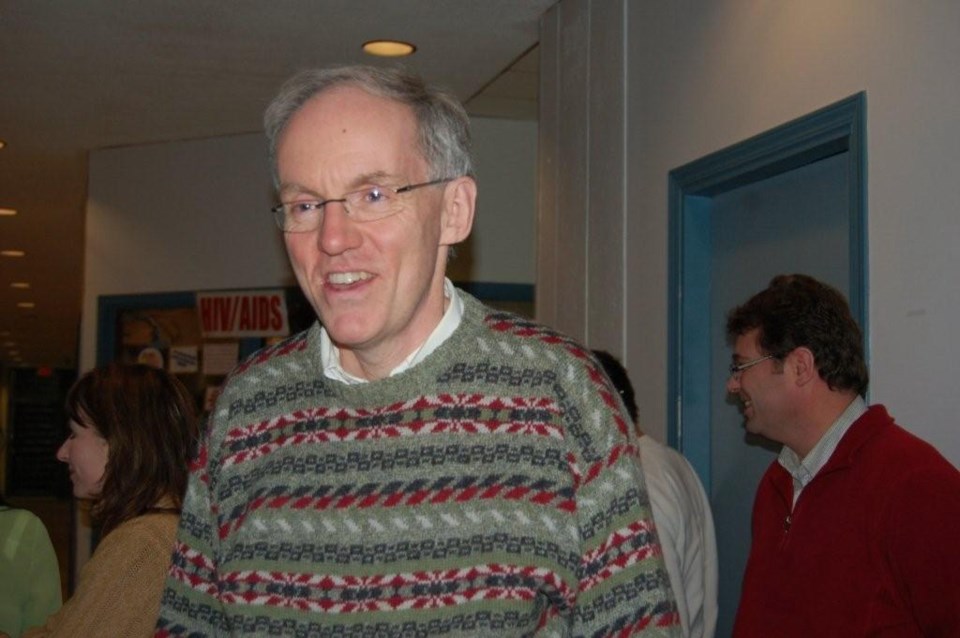A letter from Minister of Intergovernmental Affairs Steve Ashton about video lottery terminal (VLT) revenue distribution set off sparks at city council Aug. 24, with Coun. Judy Kolada saying she feels the City of Thompson is being cheated by the province on the amount paid out.
In the letter Ashton notifies council that the second installment of the 2009 Rural Community Development VLT grant, which sees money going towards municipalities as a share of net provincial VLT revenues, has been directly deposited to their account. The VLT revenues are part of the 2009 provincial funding support through Manitoba Intergovernmental Affairs.
Ashton explains that the funding includes a per capita of $20.26 based on 2006 census population information and a base payment of $5,000 per municipality. Although the per capita rate has gone up from the 2008 rate of $19.97, Ashton goes on to say that the 2009 payment includes an adjustment to the 2007 and 2008 VLT grants to reflect final revisions to the 2006 census population.
The VLT payments are being distributed in three installments. The first payment was provided to municipalities on March 31 of this year and the final payment will be made by Sept. 30.
Although Ashton closes the letter by saying that the provision of VLT grants reflects the Province of Manitoba's commitment to help municipalities address priority projects and services, there was some talk in council after the letter was read that suggested not all council members are completely happy with the revenue distribution process.
Coun. Judy Kolada, in particular, went as far as to say that she feels the community of Thompson is being "cheated" with the amount of money that is returning to Thompson from the operation of VLTs.
Kolada pointed out that there are currently 10 locations in the city of Thompson where VLTs are located, and estimated that there are between 150 and 200 machines in the city.
"One hotel has confirmed that each machine averages $800 per day after the payout of winnings. From this $800, 20 per cent is paid to the host business, leaving $640 per machine payable to Manitoba Lotteries," she explains, going on to say that if the machine is located on a First Nations reserve, the Indian band who is the host receives 90 per cent of the revenue and the balance is paid to Manitoba Lotteries. She says at this rate of return, if there are 150 machines in Thompson, the profit for Manitoba Lotteries after the host business is paid would be $35,640.
Kolada says that, according to the Manitoba Lotteries Corporation (MLC), $60 million was given to municipalities last year in the form of grants and rural and urban economic development, with Thompson being given $273,517.64. She says that Steinbach, a community that does not allow VLTs, received $225,988.86.
"This means that a community that may remit as much as $50 million per year only gets 40 some thousand dollars more than a small community who will not allow VLTs in their community," Kolada says. "We are also surrounded with reserve communities who get to keep 90 per cent of their revenue. How fair is that?"
Kolada finished her comments by reminding council that they have the authority to ban VLTs in the city, much like Steinbach, which, she says, still receives revenue without the "headache of the related social problems" affecting their community.
At a recent closed meeting, council agreed to approach the Association of Manitoba Municipalities (AMM) for assistance with the issue of VLT revenue distribution. At the regional meeting of the AMM held in Lynn Lake in June, Northern communities unanimously supported a resolution to that affect.
The AMM has passed two resolutions in recent years on the issue, says Lynne Bereza, communications co-ordinator. In 2004, the association passed a resolution that noted, "community centres in rural municipalities have experienced declining revenues from bingos since the inception of VLTs" and "the market for hall rentals is limited in sparsely populated municipalities" it asked the province to allot an additional $10 per capita from VLT revenues to all municipalities "for the support of all community centres."
The AMM said, "community centres depend almost solely on bingo revenues for their existence."
A second resolution passed three years later in 2007 noted "community organizations capacity to raise funds has been negatively impacted by the addition of VLT machines" and since the inception of VLTs in 1993 Manitoba municipalities have been receiving a base grant and per capita percentage and the VLT base grant funding to municipalities has not increased since 1993." The resolution called for the province to sweeten the revenue transfer pot.
The Criminal Code of Canada was amended in 1969 to permit legalized gambling and authorize provinces to license and operate lotteries and casinos. Manitoba did not do so until 1989.
In August 1991 some 2,100 VLTs were installed in rural hotels throughout Manitoba and another 1,800 terminals were introduced in Winnipeg. In the first year of operation, VLTs brought in nearly $7 million -or $4.5 million more than the province had projected.
In 1992 the old Union of Manitoba Municipalities (UMM) and Manitoba Association of Urban Municipalities (MAUM) both passed resolutions asking the province to cut municipalities in for a piece of the VLT revenue pie.
At the UMM convention, the "Brandon resolution," which sought the highest percentage - 25 per cent compared to 20 per cent proposed by Gimli - was passed, but the province only offered 10 per cent of an estimated $40 million in VLT revenues in 1994 as unconditional grants, which were allocated on a per capita basis with a $5,000 base grant to each municipality.
Both the MAUM and UMM pushed again in 1993 and 1994 for a 25 per cent share, but the province said most of the VLT revenue was earmarked for health care and education and only 10 per cent was available to municipalities. The AMM was created in January 1999 as a result of a merger between the Union of Manitoba Municipalities (UMM) and the Manitoba Association of Urban Municipalities (MAUM). All 197 municipalities in Manitoba are members of the AMM.
In 1998 Winkler held a referendum on removing VLTs from the community and refusing a share of VLT revenue. It passed with 78 per cent of the votes cast.




